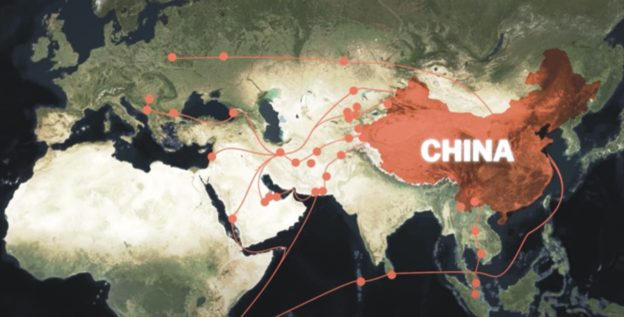While China concentrates on celebrating the 10th anniversary of its Belt and Road initiative, multiple countries and analysts are looking at the success of this initiative which according to many, continues to lose its charm among the nations that banked on it for the economic development.
The initiative, a signature foreign policy strategy launched in autumn 2013 after Xi became president has spawned ports, railways, highways, power plants and other projects stretching from Asia to Africa, says a report that appeared in a leading Asian news outlet.
From Beijing’s standpoint, the report says, the BRI has largely achieved its two original goals, according to Ammar Malik, a senior researcher at AidData, a research lab at U.S. University William & Mary.
One was to deploy “excess construction and financial capacity at home to return-generating projects abroad,” he said. The other, he added, was to build strategic leverage by spreading goodwill toward China in participating countries and gaining policy influence over governments.
China’s State Council recently said that about 150 countries and 30 international organizations had signed BRI cooperation agreements by June this year, with construction contracts reaching $2 trillion.
But while the BRI helped to meet developing economies’ project financing needs, alongside other international lenders, critics say it has contributed to debt distress amid rising interest rates and other economic pressure.
“The proportion of BRI participating countries now suffering from debt distress per the International Monetary Fund has doubled in the past eight years,” said AidData’s Malik. He cited examples including Zambia, Sri Lanka and Pakistan, which have either defaulted or are at risk of doing so.
China consistently rejects the charge that it has led some countries into a “debt trap.”
But AidData’s study also found that over a third of all BRI projects have suffered from implementation challenges such as environmental damage, corruption scandals and labor violations. One example is Malaysia’s East Coast Rail Link, which had to be renegotiated after a new Malaysian government was elected in 2018 and suspended it on concerns about costs and transparency.
The world around the BRI is changing, too.
During the early years, U.S. President Donald Trump’s “America First” slogan against globalization made the Chinese idea of connectivity and integration more appealing to many countries, said Xue Gong, an academic at Singapore’s S. Rajaratnam School of International Studies.
However, BRI activity has declined significantly since 2018, amid a slowdown in China’s own economy and growing concerns about unsustainable debt in recipient countries, according to U.S. risk adviser Eurasia Group.
“For construction projects, the [average] deal size in 2022 was the lowest since the BRI was announced in 2013, with about $321 million in 2022 compared to $496 million in 2021,” a report issued by Shanghai’s Fudan University said. “Construction projects tended to be smaller, possibly as they rely on sovereign guarantees that became harder to secure due to tighter recipient government budgets and adjusted risk management models of Chinese financial institutions in the global economic uncertainty.”
A decade on, China appears to be honing its pitch, shifting the emphasis from large-scale infrastructure projects to what it deems “small and beautiful” technology-based cooperation in recent years. Beijing has also pledged to cease fossil fuel investments in favor of clean energy development.
In a policy paper published last week, Beijing vowed to open up the BRI to more areas of cooperation and provide project financing based on local needs and conditions to avoid causing debt risk.
Still, questions persist over the enduring appeal of the BRI after the experience of the past 10 years.
China has said that over 140 countries are sending representatives to this week’s forum. Apart from Putin, the guest list includes the leaders of Serbia, Sri Lanka and Thailand, among others. But the event was expected to attract only about a dozen heads of state and government after more than 35 attended the last BRI gathering in 2019.
“Unlike the success of the two BRI summits held several years ago, the expected low attendance at the upcoming third forum is a sign that the BRI may be losing its attraction,” said Singapore’s Gong.
Belt and Road initiative after 10 years of its birth Has BRI really trapped countries into a debt distress?
on 25/10/2023








